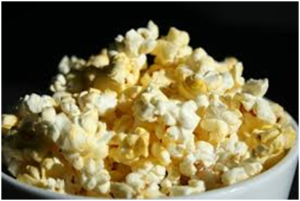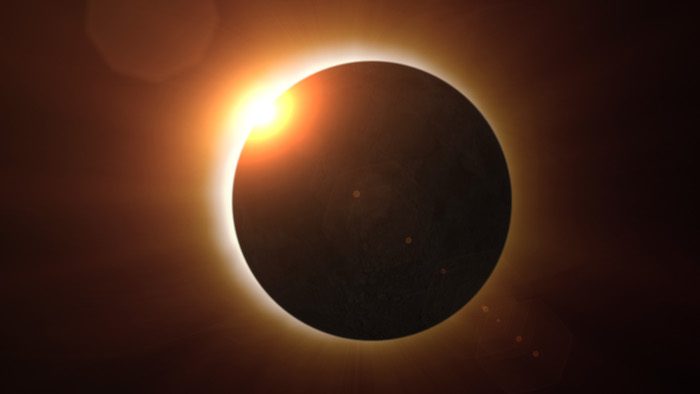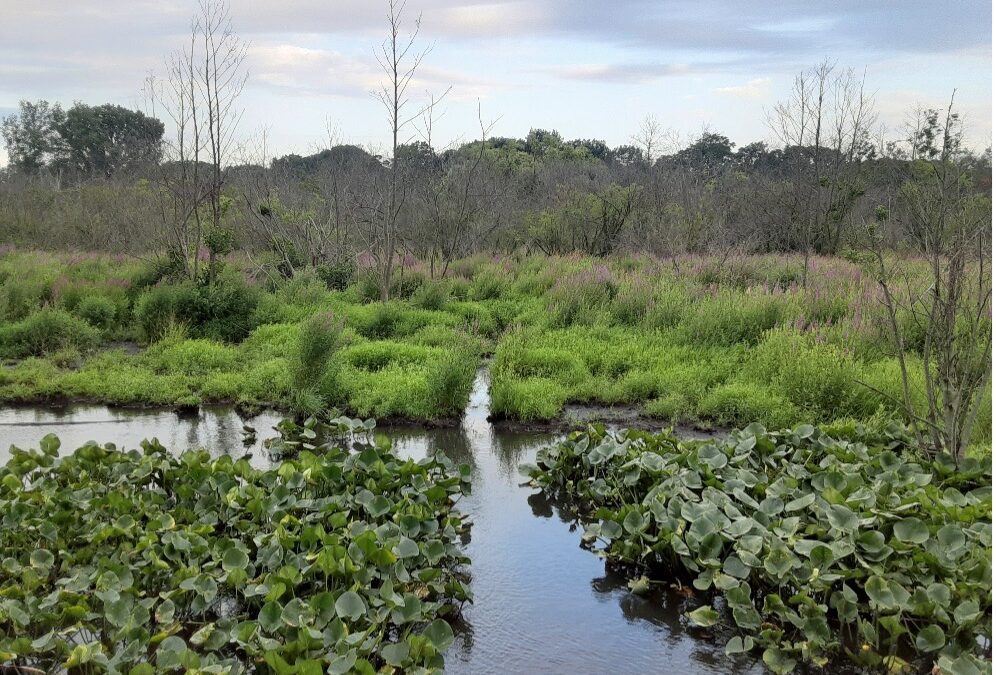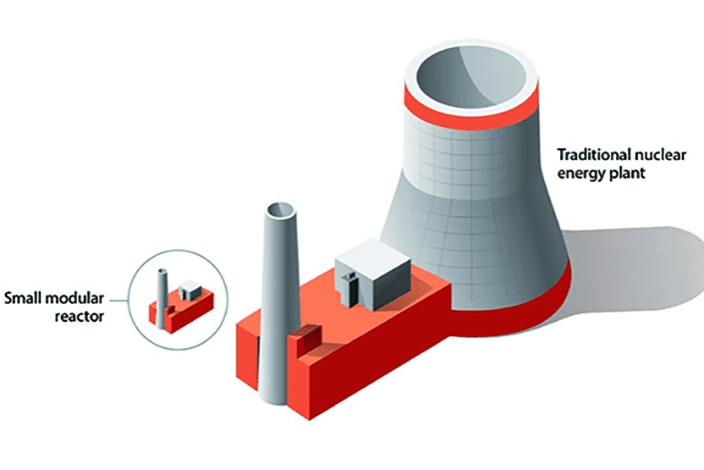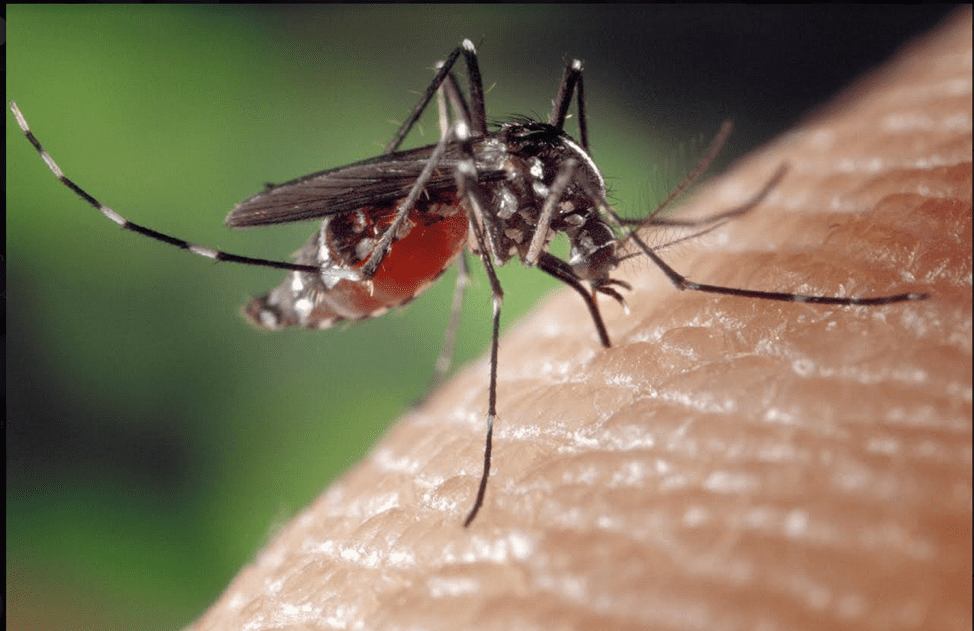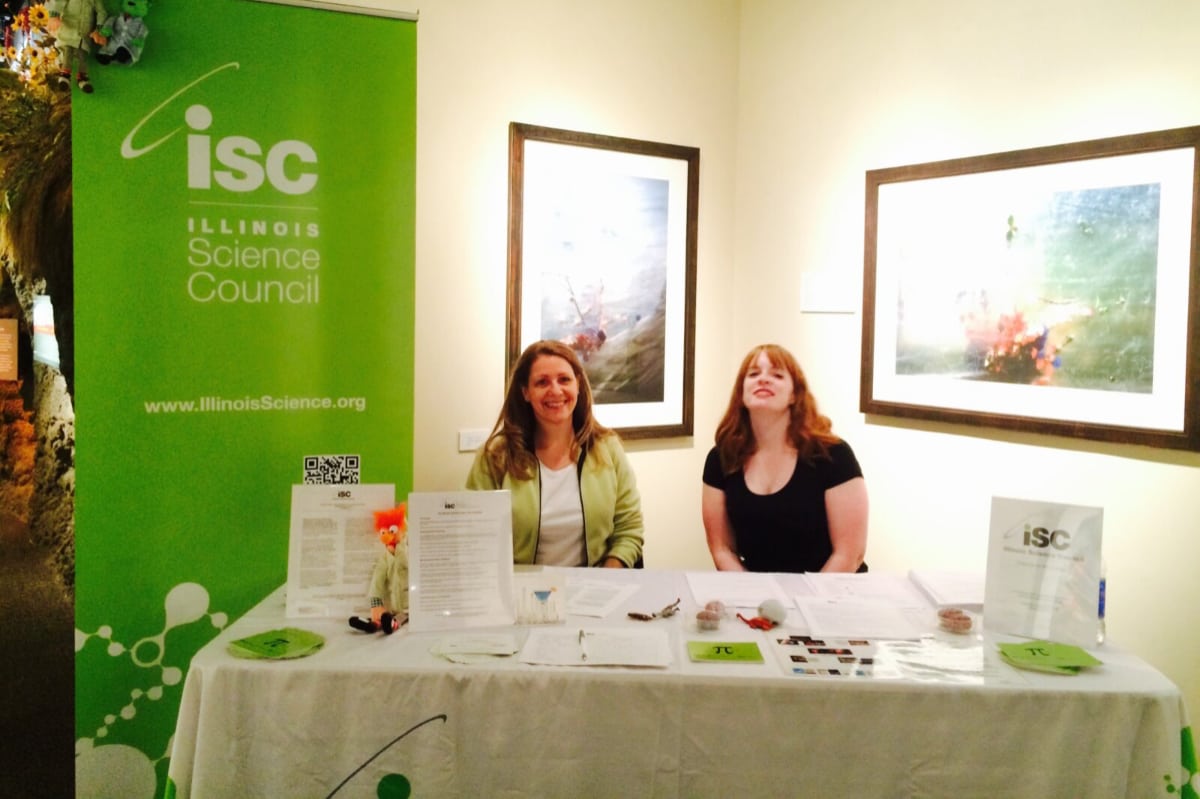On April 8th, 2024, a total solar eclipse will sweep across North America, from Mexico to the Maine-Canadian border. For those who experienced the spectacular solar eclipse of 2017, this one will be similar, crossing the United States from west to east and passing...
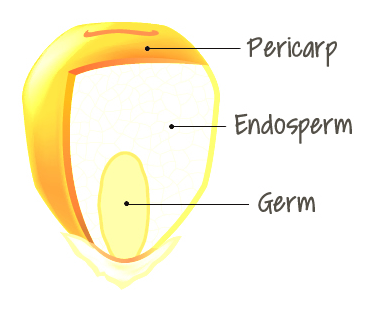
Popcorn. Classic movie snack. Perfect combination of salty and light, fluffy crunch.
From air popped kernels to caramel corn, and white cheddar kernels to butter lovers, popcorn is the magic snack that explodes out of its shell. But why does popcorn pop? How does this tasty treat, which starts as a hard, little kernel, burst into a warm, crunchy piece of popcorn?
According to the experts on The Popcorn Board, there are six kinds of corn, but only one of them can pop. Popcorn (the one that pops) is a maize plant, with the scientific name Zea mays everta. Most of the popcorn in the world is grown in Nebraska and Indiana, but farmers in Illinois and other Midwestern states also grow popcorn. According to Lauren Shissler, a member of the Illinois Farm Families Blog group, popcorn plants can grow to over six feet tall, and they also thrive in sandy soil, which is not ideal for most other crops.
Americans eat more popcorn than anyone else in the world. Even our microwaves have special popcorn buttons.

To look at what makes popcorn pop, we first have to understand what a popcorn kernel is made of. A popcorn kernel is composed of three main parts:
- Germ
- Endosperm
- Hull / Pericarp
The germ is found inside the shell and is considered the “living” part of the plant. The endosperm (also inside the shell) is a starchy area that provides nutrients for the germ. Finally, the hull is made of cellulose an indigestible sugar, and provides the hard outer shell. In popcorn, the hull is harder and thicker than in other types of corn.
Why does popcorn pop?
A popcorn kernel must be able to withstand enough internal pressure for it to explode into our beloved snack. Popcorn’s thick hull is what allows this to happen. When you heat a kernel in the microwave, the microwaves transfer energy, in the form of heat, to the water inside the kernel. The water absorbs the heat and it turns to steam and expands, thus increasing the pressure inside the kernel. The pressure builds up inside of it to the tune of about 135 pounds per square inch. This means that one little kernel explodes after resisting over 4 times the pressure inside car tires! When the pressure builds to an amount the hull can no longer contain, it explodes open, resulting in a piece of popcorn.
Conveniently, microwaves produce waves of a precise frequency that is equal to frequency at which water molecules vibrate. When the water molecules vibrate, they give off heat and turn to steam, thereby building up enormous amounts of pressure inside popcorn kernels. According to The Popcorn Board, the ideal moisture content for popping popcorn is 13.5% – 14%. With too much or too little moisture, the kernel is less likely to pop. In order to maintain the specific moisture content inside the kernels, companies almost always package bags of popcorn inside airtight plastic wrappings.
If you have popcorn that just won’t pop, it has probably dried out. Sandra Mason, an Extension Educator and Horticulturist from the University of Illinois, tells us that the good news is there’s a way to make dried out popcorn pop by restoring the water content inside the kernels. She recommends placing stubborn kernels inside a glass jar with a tablespoon of water. Next, shake the jar vigorously a few times per day for 2-3 days, and place the kernels in a brown paper bag and try to pop the kernels again.
What happens when popcorn kernels explode?
Just before a kernel explodes, the internal temperature will reach about 430 ºF. As soon as the kernel reaches this temperature and the corresponding pressure, the endosperm (soft inner layer) exploeds out of the hull (hard shell). This explosion can result in two different outcomes, depending on the shape of the popcorn.
The Popcorn Board classifies popcorn into two different shapes:
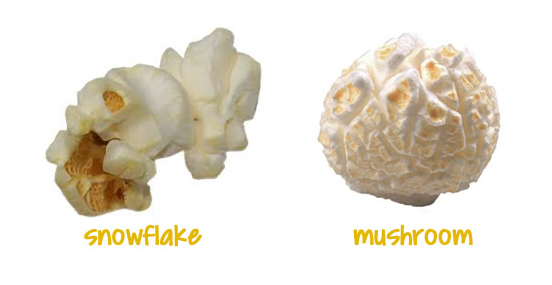
- Snowflake
- Mushroom
For snowflake popcorn, the kernel turns inside out. You can see the fluffy white endosperm now on the outside, and the little brown hull on the inside. The hull is that part that usually gets stuck in your teeth. For mushroom popcorn, the explosion is different. With mushroom popcorn, it looks as if the brown hull has broken apart into pieces, and the white endosperm has simply expanded. In contrast to snowflake popcorn, mushroom popcorn doesn’t flip inside out. Growing conditions, popping environment, and genetics influence the snowflake-to-mushroom ratio that you get from each cob of popcorn.
What’s new with popcorn?
These days, various companies that produce and sell popcorn are making genetically modified popcorn to enhance their yield and make the snack more enjoyable. Here are some current goals from the popcorn industry that they hope to meet with improved varieties of popcorn:
- At least 98% of the kernels in each bag should pop. To achieve this goal, popcorn is harvested at about 16% moisture, dried, and packaged into airtight bags when it reaches 13.5% – 14% moisture. Maintaining the correct moisture content ensures that kernels will pop.
- The endosperm portion of kernels should be larger so that snowflake shaped popcorn is bigger after popping. Today, the endosperm in popcorn expands to about 38 times its original size when it pops.
Fun fact: The Popcorn Factory celebrated National Popcorn Day in 2006 by creating what was recorded as the largest popcorn ball ever made. The enormous popcorn ball weighed 3,415 pounds (about as much as a car), and had a diameter of 24.5 feet!
If you want to celebrate popcorn, you can celebrate by “popping” a bag into the microwave on January 19th, National Popcorn Day. Additionally, the entire month of October is Popcorn Poppin’ Month, so make sure you have a shelf cleared in your pantry so you can try all the different varieties of popcorn. If you want to try growing your own popcorn, follow these directions from Mother Earth News. Good luck!
References
- http://www.popcorn.org/Facts-Fun/Our-Story
- http://ia-popcorn.com/truth-about-gmos-and-popcorn/
- http://web.extension.illinois.edu/cfiv/homeowners/041107.html
- http://www.watchusgrow.org/illinois-farm-families-blog/popcorn-farmer
- http://www.motherearthnews.com/organic-gardening/how-to-grow-corn-zmaz93amztak.aspx
- http://homeguides.sfgate.com/difference-between-snowflake-popcorn-kernel-mushroom-popcorn-kernel-62836.html

